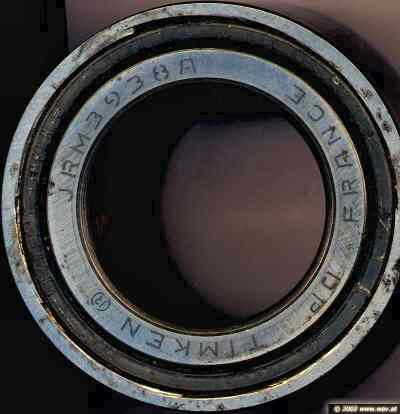B
bostonmish
Guest
For no particular reason, I gave the sidecar wheel a shake and discovered a lot of play. This is with the wheel on the ground.
Good time to do bearings. There is only one problem: I am not sure where to get the part number breakdown for all of the components involved. In addition to bearings, I'll need seals and possibly new thrust washers.
I am pretty sure my hack has a Steib drum brake wheel (there is no backing plate or other brake components, just the hub / wheel), but would like to properly ID this before taking anything apart.
Can anyone confirm if this is a Steib wheel?
I found this part number catalog (in German); somewhat useful, but they do not show the drum brake wheel.
Wondering if there are any in depth Steib parts catalogs either online or in print. PDF anyone?
--
Michael Stoic
Good time to do bearings. There is only one problem: I am not sure where to get the part number breakdown for all of the components involved. In addition to bearings, I'll need seals and possibly new thrust washers.
I am pretty sure my hack has a Steib drum brake wheel (there is no backing plate or other brake components, just the hub / wheel), but would like to properly ID this before taking anything apart.
Can anyone confirm if this is a Steib wheel?
I found this part number catalog (in German); somewhat useful, but they do not show the drum brake wheel.
Wondering if there are any in depth Steib parts catalogs either online or in print. PDF anyone?
--
Michael Stoic


